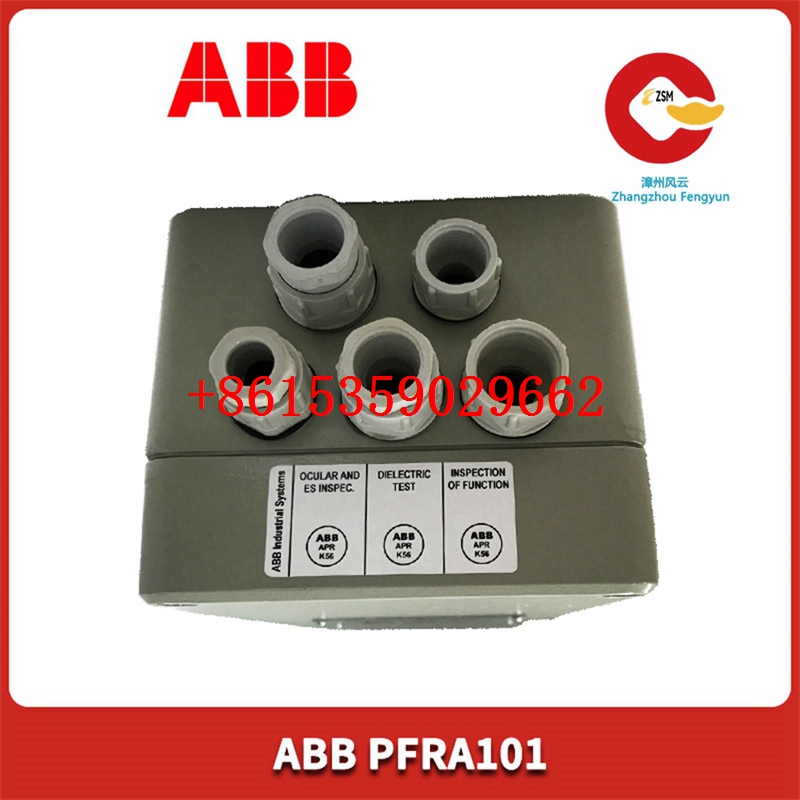Technical Parameters of ABB AC 800PEC / PP D113 Process Control Module 3BHE013692R0001

1. General Overview
The ABB AC 800PEC / PP D113 Process Control Module (Part Number: 3BHE013692R0001) is a high – performance component designed for industrial process control applications. It is an integral part of ABB’s advanced automation systems, offering reliable and efficient control solutions for a wide range of industries, including power generation, oil and gas, and manufacturing.
2. Hardware Specifications
2.1 Processor
- Type: Equipped with a powerful microprocessor capable of handling complex control algorithms and real – time data processing. The exact processor model may vary depending on the specific revision of the module, but it is generally a high – speed, multi – core processor optimized for industrial control tasks. For example, it can execute thousands of instructions per second, ensuring rapid response to process changes.
- Clock Speed: Typically operates at a clock speed in the range of several hundred megahertz to a few gigahertz, providing the necessary computational power for fast and accurate control decisions.
2.2 Memory
- RAM: Comes with a sufficient amount of Random Access Memory (RAM) to store program code, variables, and real – time data. The RAM capacity is usually in the order of several megabytes, allowing for smooth operation of complex control programs without performance bottlenecks.
- Flash Memory: Features non – volatile flash memory for storing the control program, configuration data, and system firmware. This ensures that the program and settings are retained even during power outages. The flash memory capacity can range from a few megabytes to several tens of megabytes, depending on the module’s configuration.
2.3 Input/Output (I/O) Interfaces
- Digital Inputs: Supports a certain number of digital input channels. These channels can be used to monitor the state of binary sensors, such as limit switches, push buttons, and level sensors. The input voltage levels are typically compatible with standard industrial signals (e.g., 24 V DC).
- Digital Outputs: Provides a set of digital output channels for controlling actuators like relays, solenoid valves, and motor starters. The output channels can source or sink current as required by the connected devices.
- Analog Inputs: Offers analog input channels for measuring continuous variables such as temperature, pressure, and flow. The input range and resolution of these channels are configurable to suit different sensor types and measurement requirements. For example, it may support input ranges of 0 – 10 V, 4 – 20 mA, etc., with a resolution of 12 bits or higher.
- Analog Outputs: Includes analog output channels for generating continuous control signals to drive analog actuators, such as variable – frequency drives and control valves. The output range and accuracy are also configurable to meet the specific needs of the application.
2.4 Communication Interfaces
- Ethernet: Equipped with one or more Ethernet ports for communication with other devices in the automation network, such as human – machine interfaces (HMIs), programmable logic controllers (PLCs), and supervisory control and data acquisition (SCADA) systems. The Ethernet interface supports standard protocols like TCP/IP, UDP, and Modbus TCP, enabling seamless integration into industrial Ethernet networks.
- Serial Communication: May feature serial communication ports (e.g., RS – 232, RS – 485) for connecting to legacy devices or for specific communication requirements. These ports allow for point – to – point or multi – point communication using protocols such as Modbus RTU.
3. Power Supply
- Input Voltage Range: The module is designed to operate within a specific input voltage range, typically 24 V DC ± a certain percentage (e.g., ±15%). This wide input voltage range ensures compatibility with different power supply sources commonly used in industrial environments.
- Power Consumption: Has a relatively low power consumption, which is an important consideration for energy – efficient industrial installations. The exact power consumption value depends on the module’s configuration and the number of active I/O channels, but it is usually in the range of a few watts to tens of watts.
4. Environmental Specifications
- Operating Temperature: Can operate reliably within a specified temperature range, usually from -20°C to +60°C (or a similar range). This allows the module to be used in a variety of industrial environments, including those with extreme temperature conditions.
- Storage Temperature: Has a wider storage temperature range, typically from -40°C to +85°C, ensuring that the module can be stored safely without damage before installation.
- Humidity: Designed to withstand a certain level of humidity, usually up to 95% non – condensing. This makes it suitable for use in humid industrial environments, such as paper mills or food processing plants.
- Vibration and Shock Resistance: Meets specific vibration and shock resistance standards to ensure reliable operation in environments with mechanical vibrations, such as on machinery or in vehicles. For example, it may comply with IEC 60068 – 2 – 6 for vibration and IEC 60068 – 2 – 27 for shock.
5. Software and Programming
- Supported Programming Languages: Can be programmed using standard industrial programming languages such as IEC 61131 – 3 compliant languages, including Ladder Logic (LD), Structured Text (ST), Function Block Diagram (FBD), and Sequential Function Chart (SFC). This flexibility allows engineers to choose the programming language that best suits their application and programming style.
- Operating System: Runs on a real – time operating system (RTOS) that provides deterministic behavior, ensuring that control tasks are executed within strict time constraints. The RTOS also manages system resources efficiently, allowing for multi – tasking and real – time data processing.
6. Certifications and Compliance
- Industrial Standards: Complies with various international industrial standards, such as IEC 61508 for functional safety, IEC 61131 – 3 for programmable controllers, and EMC (Electromagnetic Compatibility) standards like EN 61000 – 6 – 2 (for industrial environments) and EN 61000 – 6 – 4 (for industrial emissions). These certifications ensure that the module meets the highest levels of safety, reliability, and electromagnetic compatibility requirements.
- Regulatory Approvals: May have regulatory approvals from relevant authorities in different regions, such as UL (Underwriters Laboratories) in the United States, CE marking in Europe, and CCC (China Compulsory Certification) in China. These approvals facilitate the installation and use of the module in various countries around the world.
In summary, the ABB AC 800PEC / PP D113 Process Control Module 3BHE013692R0001 is a feature – rich and robust component that offers high – performance process control capabilities in industrial environments. Its comprehensive hardware specifications, flexible software support, and compliance with industry standards make it a reliable choice for a wide range of process control applications.


